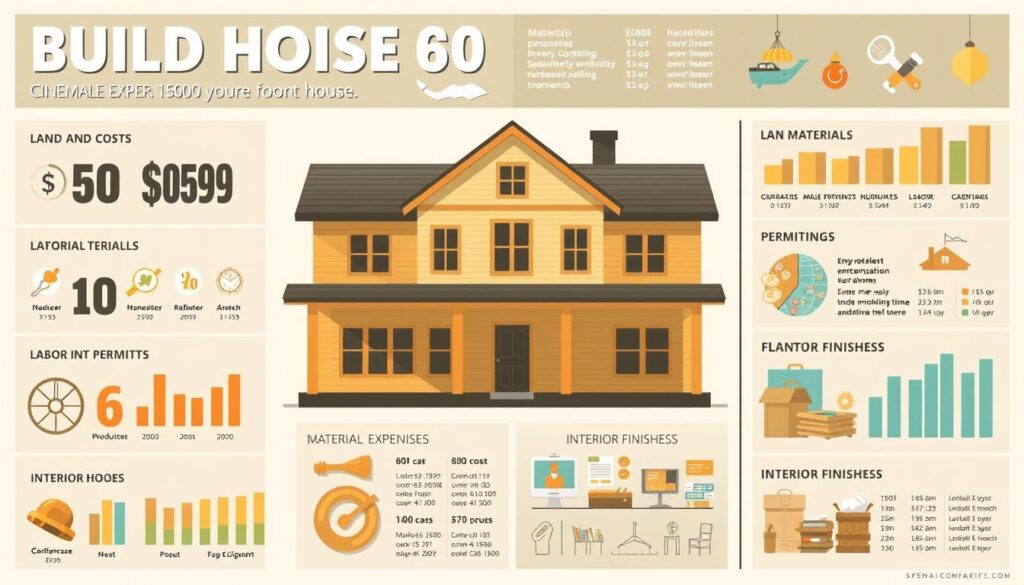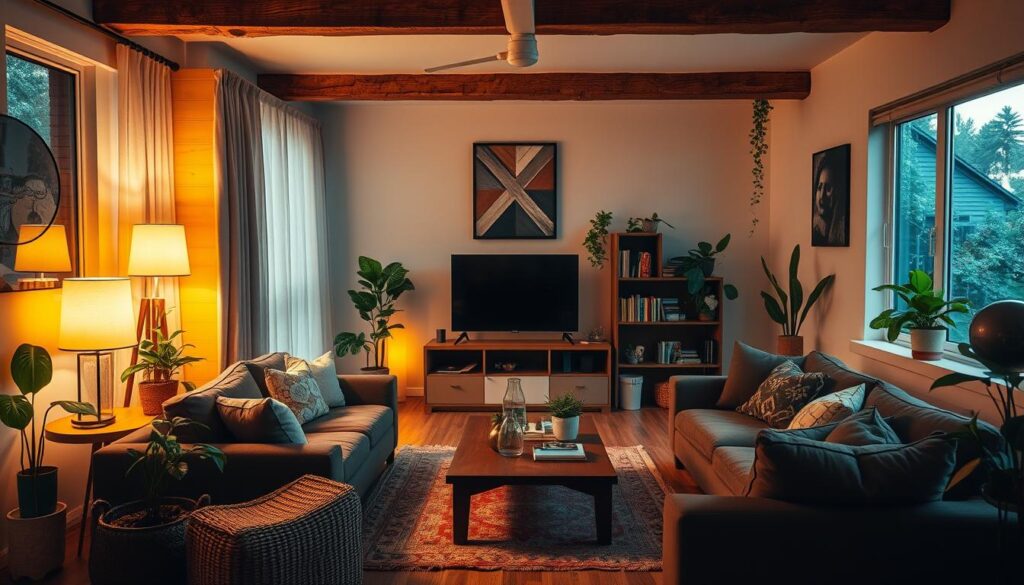How much money is required for 1500 sq ft house?
Get Your Free Moving Estimate
Determining how much money is required for a 1500 sq ft house is a crucial step for anyone considering this investment. The cost of building a 1500 sq ft house can vary significantly based on several factors, including site location, material choices, and design elements. On average, homeowners can expect to pay between $150 to $300 per square foot. This variation emphasizes the need for a well-structured budget for a 1500 sq ft house, taking into account both hard costs such as materials and labor, and soft costs including permits and financing. By understanding these variables, we can pave the way for a financially sound plan for your new home.
Key Takeaways
- The average cost to build a 1500 sq ft house ranges from $150 to $300 per square foot.
- Factors influencing costs include location, material quality, and design complexity.
- Budgeting should encompass both hard and soft costs.
- A detailed understanding of expenses will aid in planning.
- Researching local real estate trends can provide valuable insights for budgeting.
Factors Influencing the Cost of a 1500 sq ft House
Understanding the expenses for a 1500 sq ft house involves examining several key factors that influence overall costs. These factors can vary significantly based on the local market and specific project requirements.
Location and Real Estate Trends
The geographic area plays a pivotal role in determining the expenses for a 1500 sq ft house. Different locations have varying land prices, labor availability, and construction regulations. Urban areas often experience higher costs driven by demand, whereas rural locations tend to offer more affordable options. Real estate trends can also sway pricing, making it essential to gauge current market conditions.
Material Quality and Availability
The choice of materials significantly impacts both the initial budget and the long-term value of the home. High-quality materials may increase durability and aesthetic appeal but will raise the expense. Availability is another concern, as fluctuating supply chain conditions can alter prices and accessibility of desired materials, affecting the average price per square foot to build a house.
Design Complexity
A distinctive architectural design or intricate layout can add complexity to the building process. This often leads to increased labor costs and extended timelines, contributing to the overall expenses for a 1500 sq ft house. Understanding the implications of design choices is crucial for effective budgeting.
| Factor | Impact on Cost |
|---|---|
| Location | Higher costs in urban areas; variable demand affects prices. |
| Material Quality | Premium materials drive up expenses; supply issues impact availability. |
| Design Complexity | Unique designs raise labor costs and timelines. |
Estimated Construction Costs per Square Foot
Understanding the estimated construction costs per square foot is essential when planning your home project. Various factors can influence these costs, including average prices at the national level, regional considerations, and labor expenses. Utilizing a building a house cost estimator can provide a clearer financial outline as you proceed.
National Average Costs
The national average construction cost per square foot generally falls within the range of $150 to $300. This variation is influenced by the choice of materials, the complexity of designs, and additional features you may want to incorporate into your build.
Regional Variations
Costs can fluctuate significantly across different regions. For instance, homes built in metropolitan areas like New York or San Francisco tend to have higher expenses due to land scarcity and elevated living costs. On the contrary, construction expenses in rural areas often remain more affordable, emphasizing the importance of using a home construction cost calculator to gauge your specific locality’s expectations.
Labor Costs
Labor is a critical component of the overall construction budget, usually accounting for 30% to 50% of the total costs. Selecting experienced contractors ensures not only quality work but also adherence to timelines and safety regulations. Working with professionals can streamline your project and mitigate potential setbacks.
| Cost Category | National Average (per sq ft) | Labor Percentage |
|---|---|---|
| Overall Construction Cost | $150 – $300 | 30% – 50% |
| West Coast | Higher (up to $400) | Varies |
| Rural Areas | Lower (around $120) | Varies |
Breakdown of Key Expenses for Building a House
Understanding the total cost to build a 1500 square foot house requires a detailed look at key expenses. This breakdown provides insights into essential costs associated with construction.
Land Acquisition Costs
Land acquisition often represents the most substantial portion of the overall budget. The price can fluctuate significantly based on factors such as:
- Location
- Size of the land
- Market demand
Permits and Fees
Permits and fees contribute additional expenses that can accumulate rapidly. Building permits and inspections are typically required by local governments, leading to costs that can reach thousands of dollars. Researching local regulations helps anticipate these financial obligations.
Utilities and Infrastructure
Connecting your home to vital services like electricity, water, and sewage is another vital expense. Assessing the proximity of these utilities during land selection can significantly impact the total cost to build a 1500 square foot house.

| Expense Type | Estimated Cost Range |
|---|---|
| Land Acquisition | $30,000 – $150,000 |
| Permits and Fees | $2,000 – $10,000 |
| Utilities Connection | $5,000 – $15,000 |
Financing Options for Home Construction
Choosing the right financing options is crucial when planning your budget for a 1500 sq ft house. We can explore various methods to secure the funds needed for construction without overwhelming ourselves with debt. This section highlights key financing routes that may best match your financial profile.
Traditional Mortgages
Traditional mortgages offer a common pathway for financing a home. Most lenders demand a down payment, often ranging from 3% to 20% of the house’s total cost. It is essential to note that some lenders may require the house to be completed before considering refinancing options. This route suits those who plan a long-lasting investment in their property.
Construction Loans
Construction loans provide a short-term financing solution specifically designed for building a home. These loans can cover expenses like labor, materials, and permits during the construction phase. Typically, once the house is built, the construction loan transitions into a standard mortgage. This option allows us to stay within our budget for a 1500 sq ft house while helping us manage cash flow during construction.
Government Loans and Grants
Government loans and grants present opportunities aimed at encouraging homeownership. Various local and national programs offer reduced interest rates or aid specifically for first-time homebuyers. Engaging with these resources can significantly lessen the financial strain and help you maintain a reasonable budget for a 1500 sq ft house.
Potential Additional Costs
When planning for the cost of building a 1500 sq ft house, it’s crucial to consider potential additional expenses that may arise beyond basic construction. These costs can significantly impact your overall budget, making detailed planning essential.
Landscaping and External Features
Creating appealing outdoor spaces often requires investment. Features such as:
- Driveways
- Gardens
- Fencing
Each of these can add to the total cost of building a 1500 sq ft house, so it’s important to account for these elements in your financial plan.
Interior Finishes and Upgrades
Choosing high-quality materials for interiors can enhance appeal and comfort. Consider the costs associated with:
- Countertops
- Flooring
- Lighting fixtures
Each upgrade contributes to the final cost of building a 1500 sq ft house and can range significantly based on preferences.
Furnishing and Appliances
Budgeting for the essentials after construction is crucial. Moving in entails costs such as:
- Furniture
- Kitchen appliances
- Window treatments
These expenditures play a vital role in ensuring your new home feels complete and functional.
It is essential to factor in these additional costs along with the primary expenses to create a comprehensive budget when planning for the cost of building a 1500 sq ft house.
Cost Variations Based on House Type
When considering the 1500 sq ft house cost breakdown, various house types significantly influence overall expenses. Understanding these variations helps in making informed decisions when planning construction or purchase. We will examine three main categories: single-family homes, modular homes, and custom-built houses.
Single-Family Home vs. Multi-Family Units
Single-family homes typically present higher costs per unit compared to multi-family units. This situation arises because expenses such as land acquisition, utilities, and maintenance are not shared among multiple families. In contrast, multi-family units distribute these costs, making them a more budget-friendly choice for many.
Modular Homes
Modular homes often provide a cost-effective solution for buyers. These homes are manufactured in sections and assembled on-site, which can lead to lower construction costs and quicker occupancy. For budget-conscious individuals, modular options present an attractive alternative without compromising on quality.
Custom Built Houses
Custom-built houses allow homeowners to tailor their living spaces to specific needs and preferences. While offering unique design features, this customization carries a higher price tag. The 1500 sq ft house cost breakdown for such homes often reflects the premium materials and personalized services required to achieve the desired results.
| House Type | Average Cost Per Square Foot | Key Features |
|---|---|---|
| Single-Family Home | $150-$250 | Private yard, higher individual expenses |
| Multi-Family Unit | $100-$200 | Shared amenities, lower individual costs |
| Modular Home | $90-$160 | Quick occupancy, factory-built efficiency |
| Custom Built House | $200-$400 | Tailored design, premium materials |
Navigating the Home Building Process
Successfully managing the home building process is crucial for keeping expenses for a 1500 sq ft house within budget. Thoughtful decisions about whether to hire contractors or tackle the project yourself, ensuring regular building inspections, and setting realistic project timelines can significantly impact the overall costs.
Hiring Contractors vs. DIY
Choosing between hiring professionals and taking on the challenge of a DIY approach can shape your budget dramatically. Contractors offer expertise, ensuring quality workmanship and adherence to local building codes. On the other hand, attempting DIY projects may reduce immediate labor costs while risking mistakes that can lead to increased expenses.
Importance of Building Inspections
Regular building inspections are vital for identifying issues early. Having professionals conduct these inspections can prevent costly repairs down the line, ultimately safeguarding your investment. Detecting problems bright and early may save money, especially when it comes to avoiding construction delays or compliance issues.
Project Timelines
Establishing a reliable and realistic project timeline is critical. Delays often lead to extra expenses for a 1500 sq ft house, whether from increased labor costs or prolonged financing payments. Staying on track with timelines helps maintain your budget and mitigates unexpected costs, allowing you to achieve your home building goals efficiently.
Budgeting for Unexpected Expenses
Building a house requires thorough planning and budgeting for various expenses. Unexpected costs can arise during construction, impacting the overall budget significantly. We must consider common pitfalls, set aside contingency funds, and prioritize proper insurance to ensure a smooth building experience.
Common Pitfalls to Watch For
Several factors can lead to budget overruns. It’s crucial to recognize potential issues that may arise during construction:
- Bad weather can delay construction schedules and increase costs.
- Contractor miscommunications might lead to additional charges.
- Unforeseen soil conditions could necessitate extra groundwork or materials.
Contingency Funds
Setting aside a contingency fund is essential for any construction project. Experts recommend allocating 10-20% of the total construction budget for unexpected expenses. This buffer can be critical for addressing unforeseen challenges without derailing the project. A building a house cost estimator can help determine the right amount to reserve.
Insurance Considerations
Protecting your investment is paramount. Proper insurance coverage during construction safeguards against potential liabilities and unforeseen incidents that may arise. Consider policies that cover general liability, property damage, and worker’s compensation to mitigate risks and costs.
| Expense Type | Example Amount |
|---|---|
| Contingency Fund (10-20%) | $10,000 – $20,000 |
| Insurance Coverage | $1,500 – $3,000 |
| Unexpected Contractor Costs | $2,000 – $5,000 |
Tips for Cutting Costs Without Sacrificing Quality
We understand the importance of finding ways to reduce expenses while maintaining high standards for quality. Implementing effective tips for cutting costs without sacrificing quality can significantly impact your overall budget without compromising your vision for your new home.
Selecting Affordable Materials
We encourage exploring alternative materials that can achieve the desired look and functionality. For example:
- Reclaimed wood instead of new lumber
- Engineered stone rather than solid granite
- Recycled glass tiles in place of conventional options
These choices can provide beauty and durability while reducing expenses.
Smart Design Choices
Design plays a crucial role in overall building costs. Opt for energy-efficient designs and layouts that can lower long-term utility costs. Consider:
- Open floor plans that reduce the square footage of walls
- Strategic window placements to maximize natural light
- Energy-efficient heating and cooling systems
Such smart decisions help manage upfront costs and can lead to future savings.
Comparing Multiple Quotes
Seeking multiple quotes from contractors allows us to ensure the best price for quality workmanship. An effective strategy includes:
- Inviting bids from at least three different contractors
- Checking references and previous work samples
- Discussing timelines and warranty offerings
Incorporating these tips for cutting costs without sacrificing quality will empower us to create the home of our dreams while staying on budget.

Conclusion: Planning for a 1500 sq ft Home
As we wrap up our exploration into how much money is required for 1500 sq ft house, it’s essential to emphasize the significance of comprehensive budgeting and planning. Many factors influence the total cost to build a 1500 square foot house, and being informed can lead to a smoother construction experience and satisfactory results.
Reflecting on Financial Preparedness
Before embarking on your home-building journey, ensure that you have a firm grasp of your financial situation. Understanding all aspects of the process not only prepares you for the immediate expenses but also helps in anticipating future needs. A well-thought-out financial plan will pave the way for a successful project journey.
Long-Term Investment Considerations
It’s vital to remember that building a home goes beyond just the initial outlay. Consider the potential appreciation of your investment over time. A strategically planned 1500 sq ft house can significantly increase your asset value, making homeownership a robust long-term investment.
Final Thoughts on Homeownership
While the path to achieving your dream home may seem daunting, surrounding yourself with the right resources and expert support makes the journey attainable. With careful planning and a dedicated team, creating a home that encapsulates comfort and security is well within reach.
FAQ
How much money is required for a 1500 sq ft house?
The cost of building a 1500 sq ft house typically ranges from 5,000 to 0,000, depending on various factors such as location, material quality, and design elements. An average price per square foot can fall within the 0 to 0 range.
What are the expenses for a 1500 sq ft house?
Key expenses include land acquisition costs, permits and fees, utilities, and construction materials. A comprehensive budget should also account for labor costs, design complexity, and landscaping.
What is the budget for a 1500 sq ft house?
Your budget for a 1500 sq ft house will depend on your specific choices. A basic estimate includes hard costs (materials, labor) and soft costs (permitting, financing), typically requiring a detailed cost breakdown to avoid surprises.
How can I estimate the total cost to build a 1500 square foot house?
Utilizing a building a house cost estimator or home construction cost calculator can provide a clearer picture of expenses. These tools often allow input for variables such as location, materials, and design preferences.
What factors influence the cost of building a 1500 sq ft house?
Primary factors include location and real estate trends, material quality, design complexity, and labor costs. Urban areas tend to have higher prices, while material availability can impact the overall budget.
Are there financing options for constructing a house?
Yes, financing options include traditional mortgages, construction loans, and government loans or grants aimed at assisting new homeowners. Each option has different requirements and benefits based on your financial situation.
What potential additional costs should I consider when building a house?
Besides primary construction expenses, consider landscaping, interior finishes, appliances, and furniture. These costs can quickly add up, so they should be part of your overall budget.
How do building costs vary based on house type?
Different house types, whether single-family homes, multi-family units, modular homes, or custom-built houses, will have distinct cost profiles. Custom homes may incur higher costs due to personalized elements, while modular options tend to be more budget-friendly.
What are some tips for cutting costs without sacrificing quality?
We recommend selecting affordable materials, making smart design choices, and comparing multiple contractor quotes to find the best deals for quality workmanship.
How can I budget for unexpected expenses during construction?
Setting up contingency funds of 10-20% of your total construction budget can help cover unforeseen costs due to common pitfalls like weather delays or contractor miscommunications.


